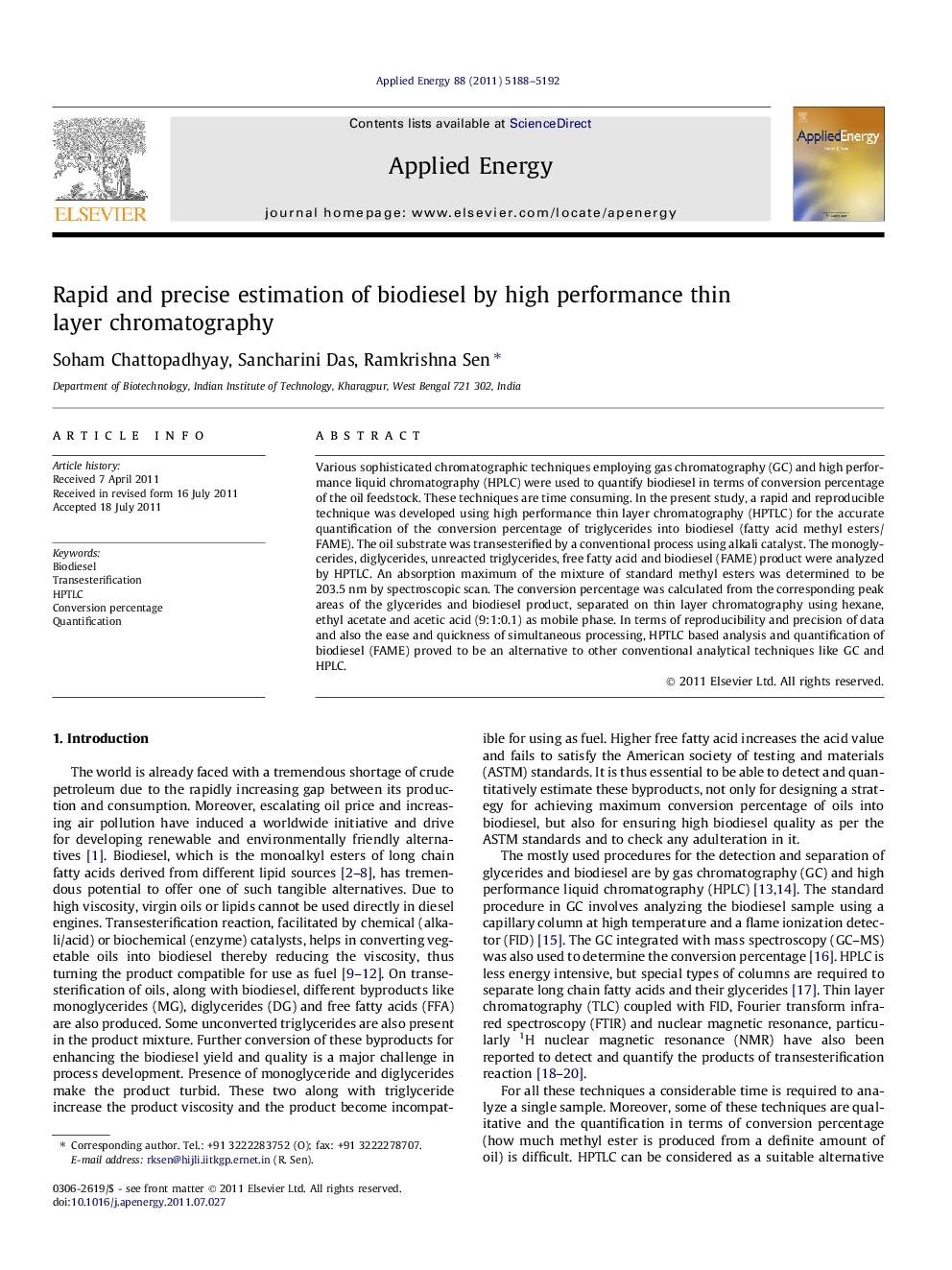| Article ID | Journal | Published Year | Pages | File Type |
|---|---|---|---|---|
| 244043 | Applied Energy | 2011 | 5 Pages |
Various sophisticated chromatographic techniques employing gas chromatography (GC) and high performance liquid chromatography (HPLC) were used to quantify biodiesel in terms of conversion percentage of the oil feedstock. These techniques are time consuming. In the present study, a rapid and reproducible technique was developed using high performance thin layer chromatography (HPTLC) for the accurate quantification of the conversion percentage of triglycerides into biodiesel (fatty acid methyl esters/FAME). The oil substrate was transesterified by a conventional process using alkali catalyst. The monoglycerides, diglycerides, unreacted triglycerides, free fatty acid and biodiesel (FAME) product were analyzed by HPTLC. An absorption maximum of the mixture of standard methyl esters was determined to be 203.5 nm by spectroscopic scan. The conversion percentage was calculated from the corresponding peak areas of the glycerides and biodiesel product, separated on thin layer chromatography using hexane, ethyl acetate and acetic acid (9:1:0.1) as mobile phase. In terms of reproducibility and precision of data and also the ease and quickness of simultaneous processing, HPTLC based analysis and quantification of biodiesel (FAME) proved to be an alternative to other conventional analytical techniques like GC and HPLC.
► A high performance thin layer chromatography (HPTLC) based method was developed. ► This method is useful for estimating percentage conversion of oil into biodiesel. ► It can also quantify byproducts as mono-, di-, triglycerides and free fatty acid. ► Many samples can be analyzed rapidly and simultaneously by this method. ► It is an alternative to GC or HPLC based quantification for percentage conversion.
